Kūmara plantation.
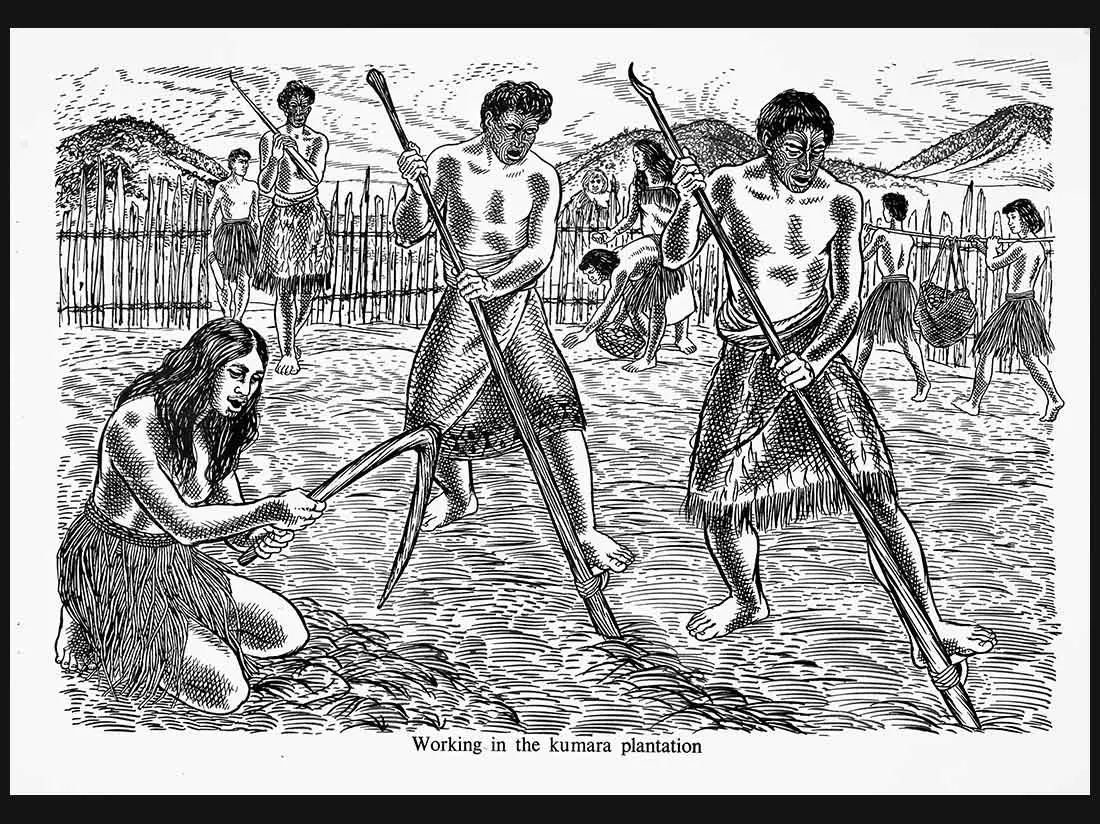
Kūmara plantation.
Use the images on this page to explore how different groups of people have lived and worked in Aotearoa New Zealand. Download and print the teacher support materials or read the online version at the bottom of this page.
Kūmara plantation.

Kūmara plantation.
Pūtiki pā, Whanganui.
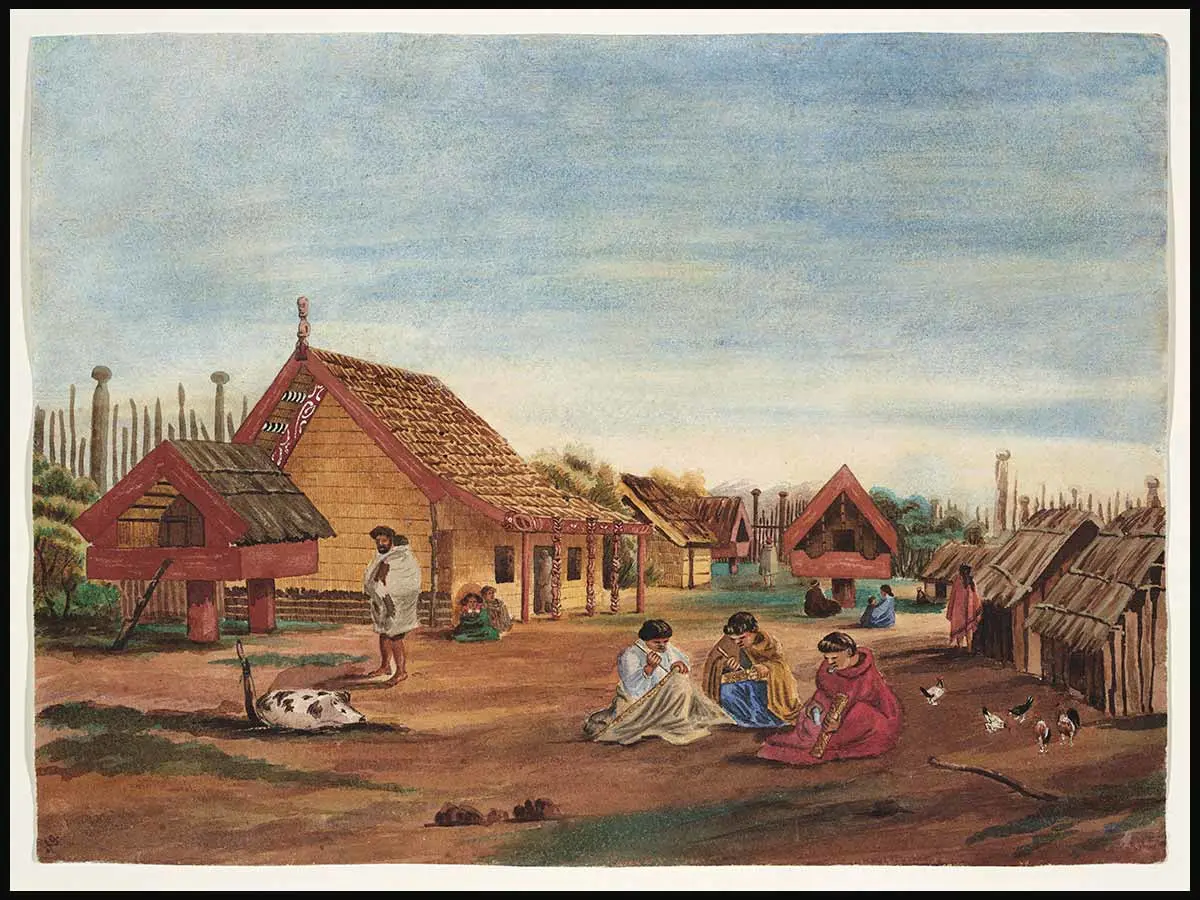
Pūtiki pā, Whanganui.
Māori and Pākehā trade.
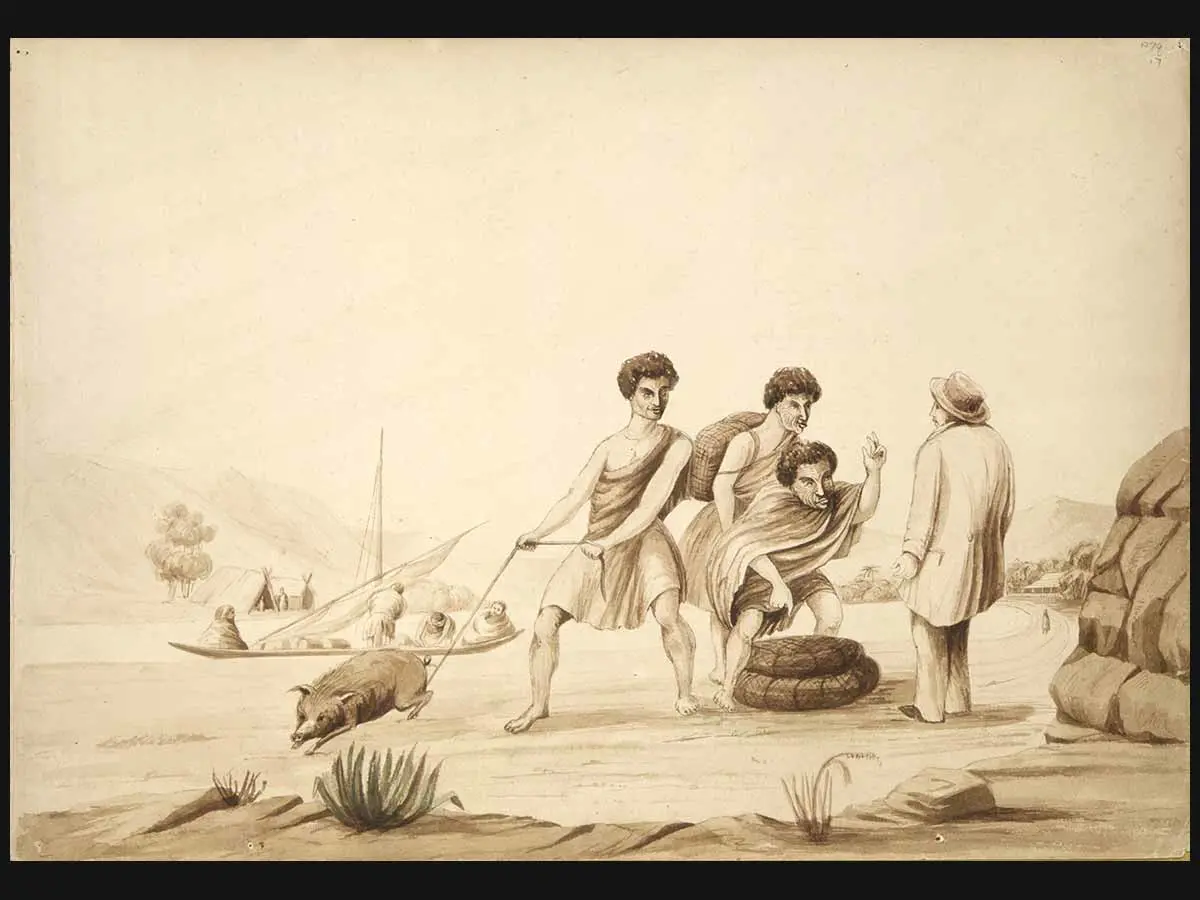
Māori and Pākehā trade.
Auckland in 1853.
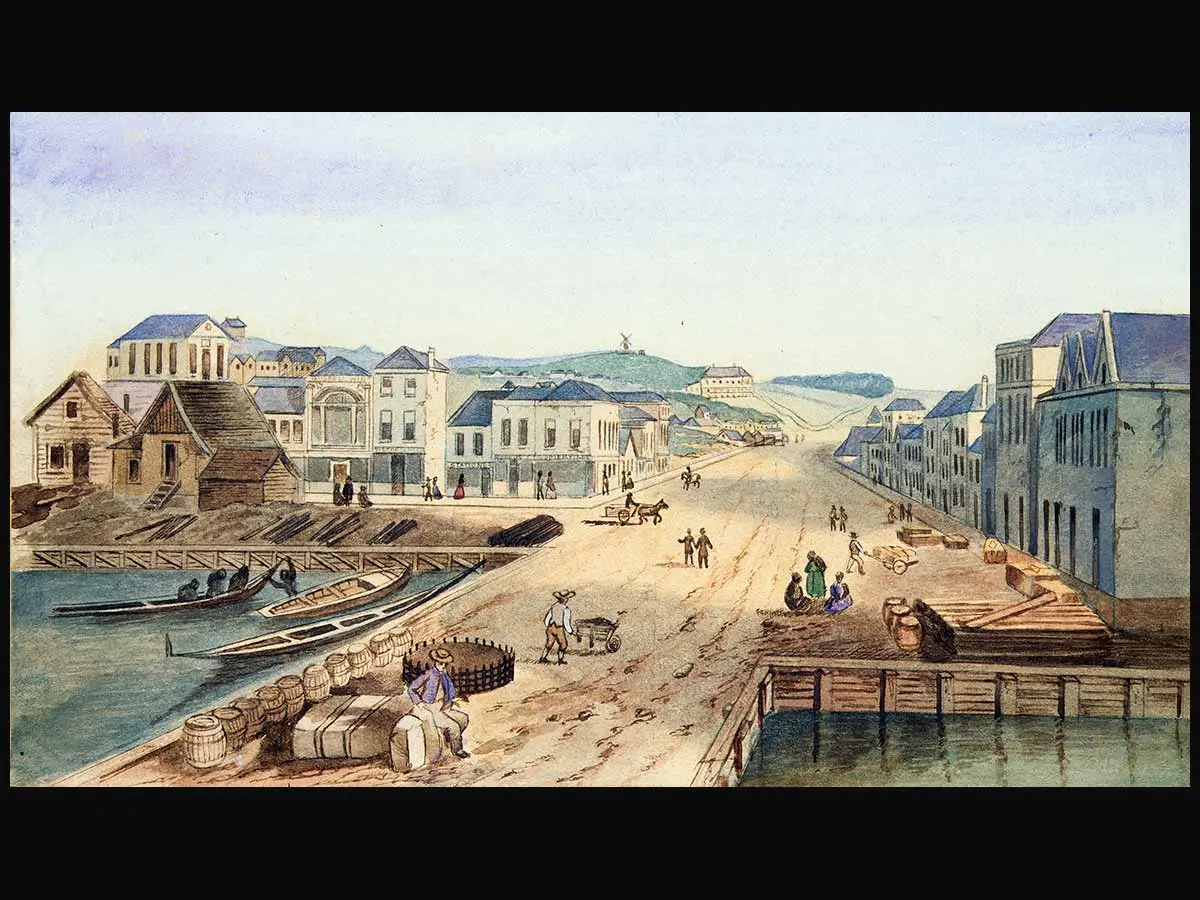
Auckland in 1853.
Felling kauri.
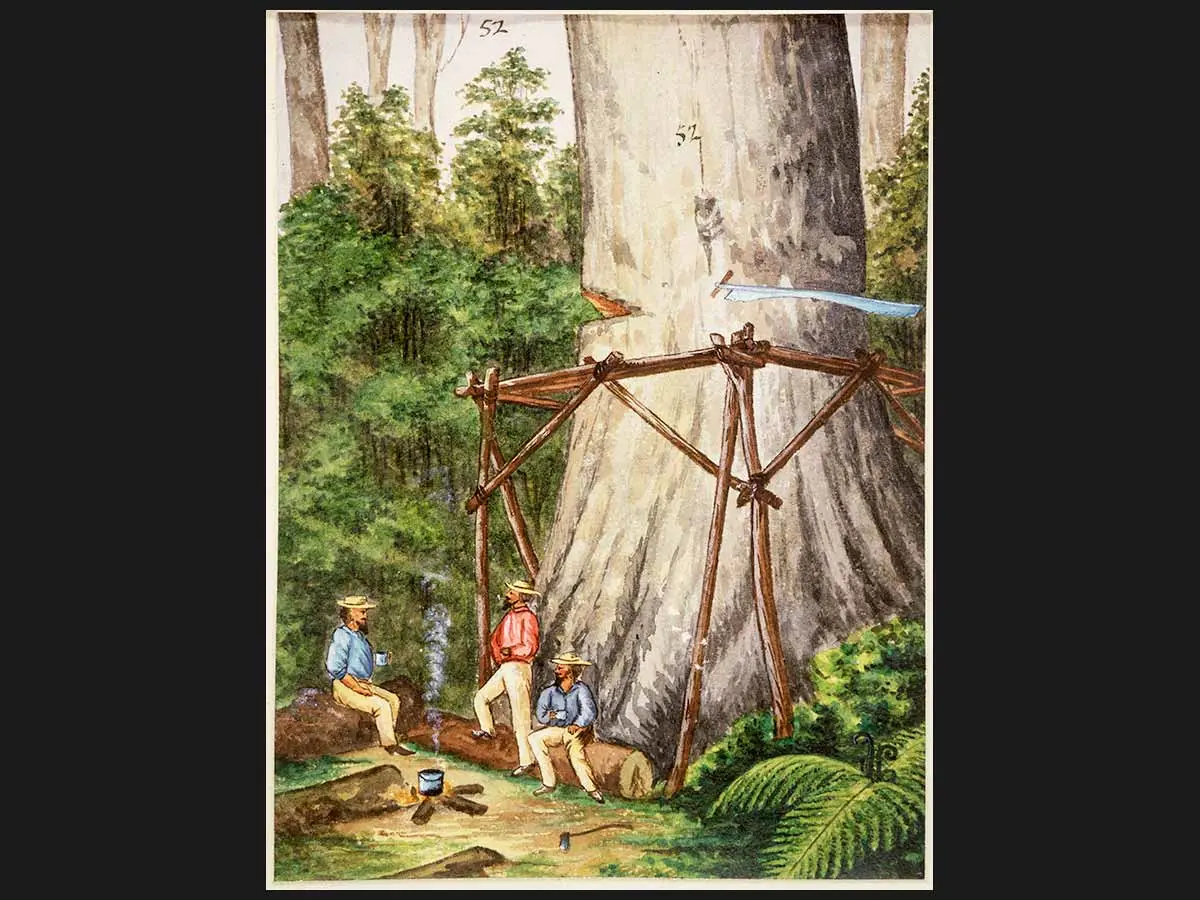
Felling kauri.
A refrigerated trade ship.
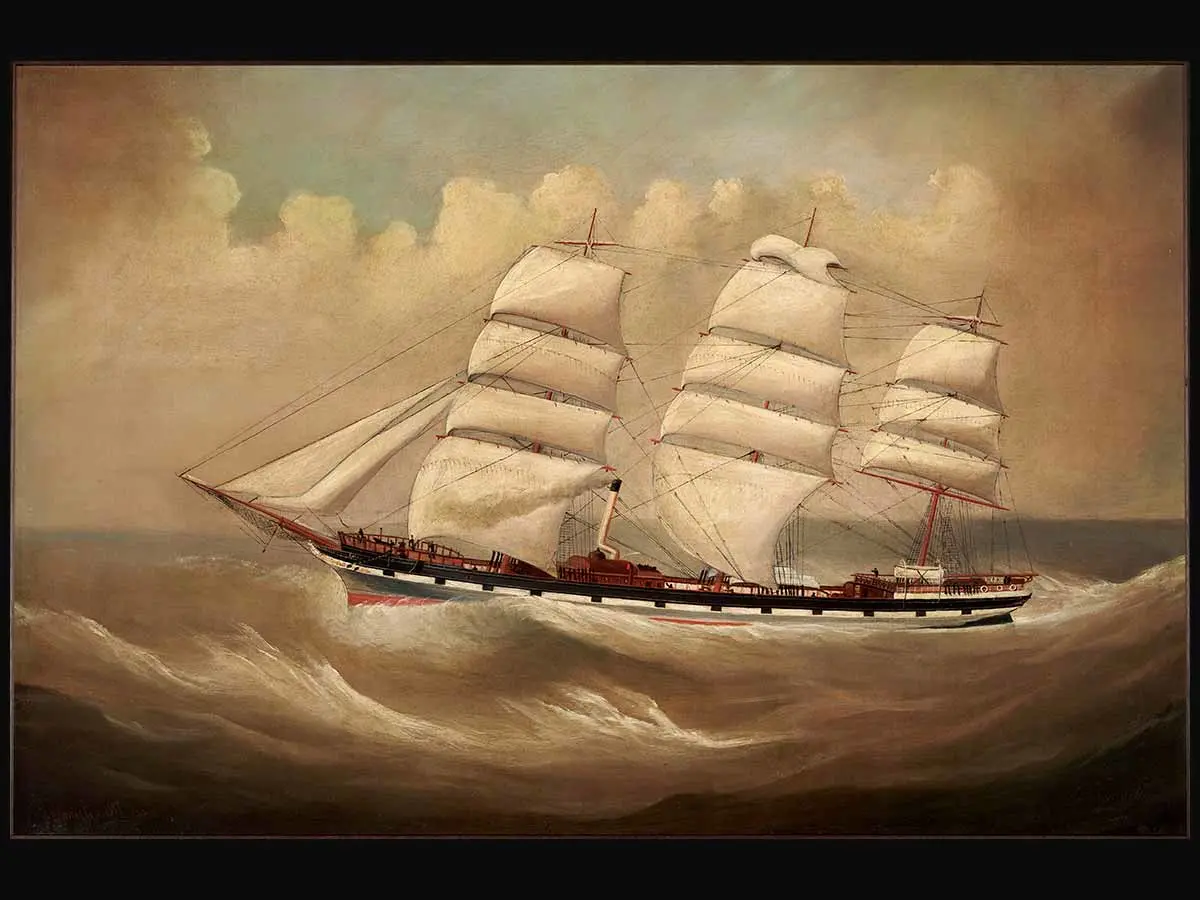
A refrigerated trade ship.
Chinese gold miners.
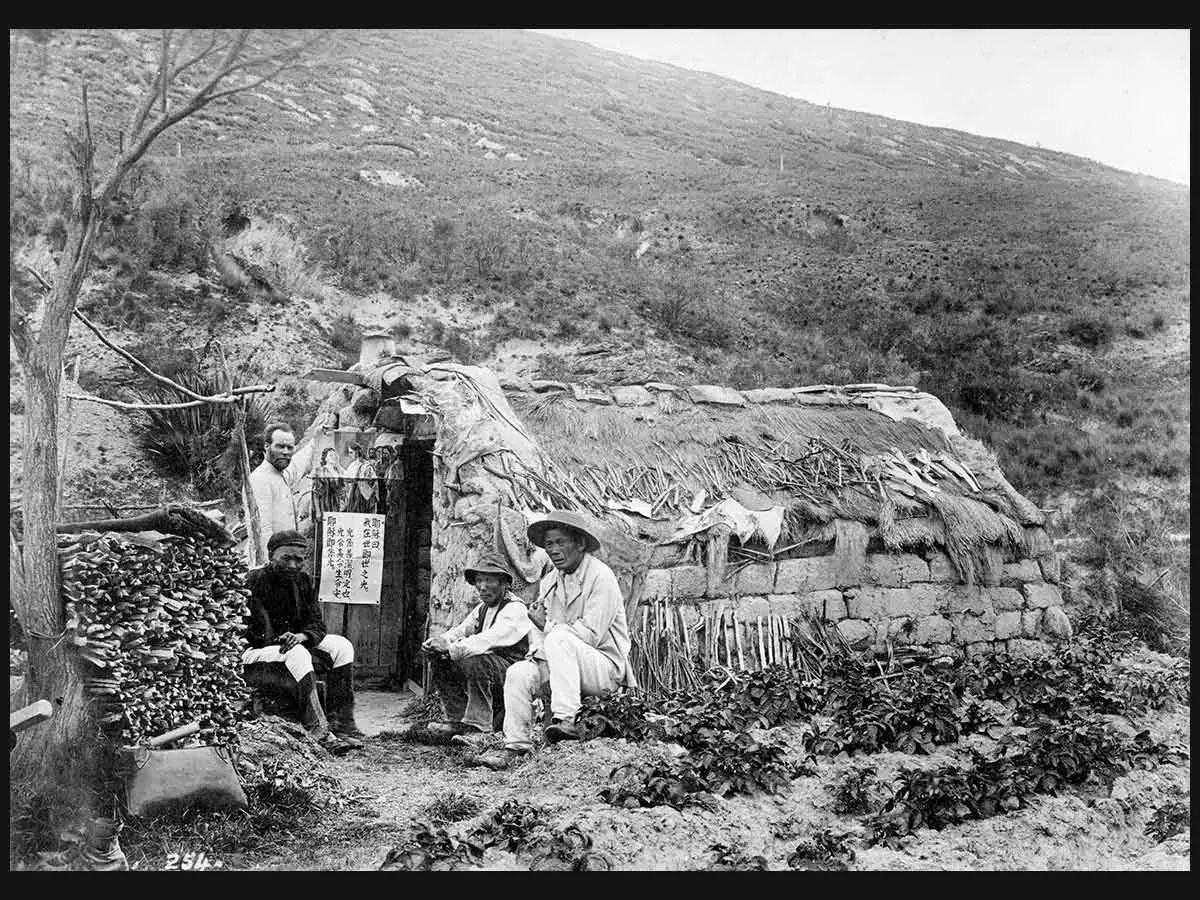
Chinese gold miners.
Doing housework.
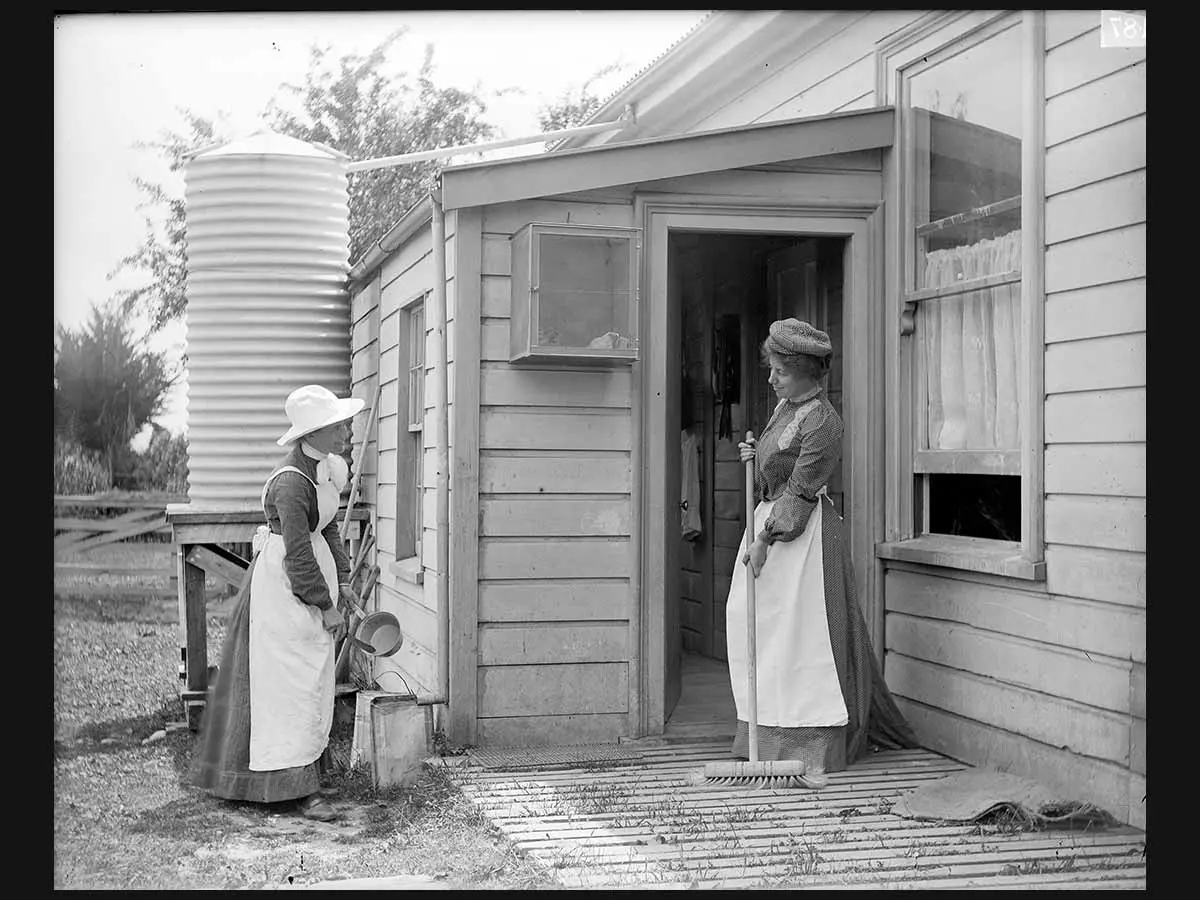
Doing housework.
Children gum digging.
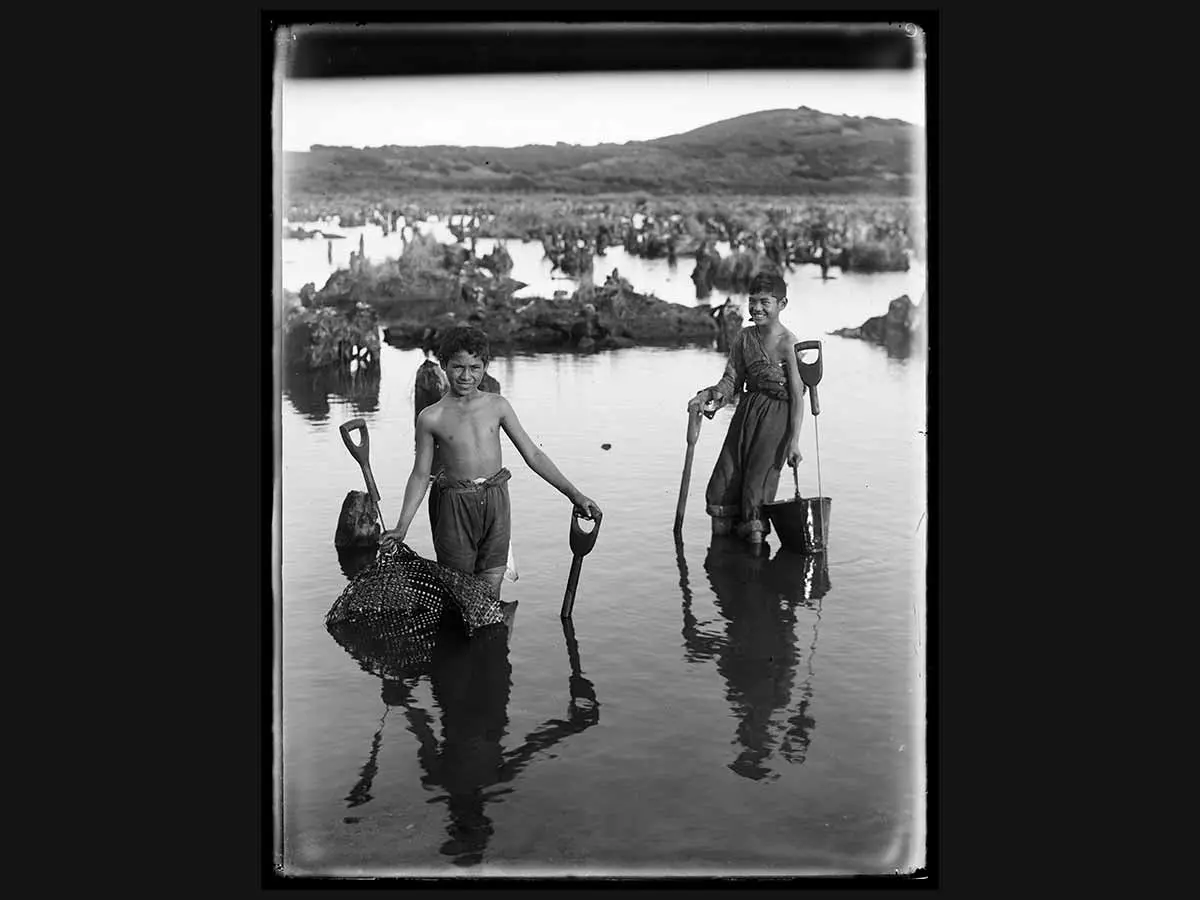
Children gum digging.
Family on their dairy farm.
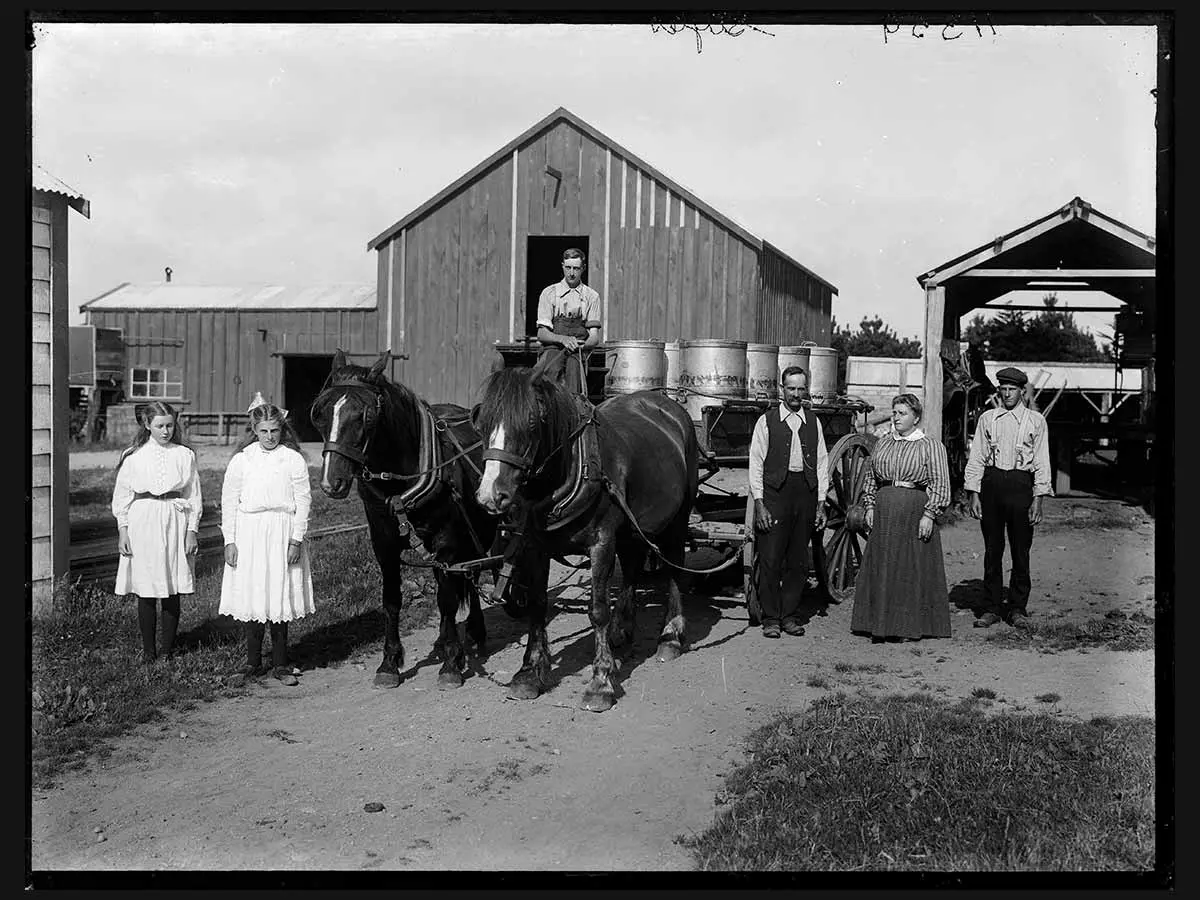
Family on their dairy farm.
Binding newspapers.
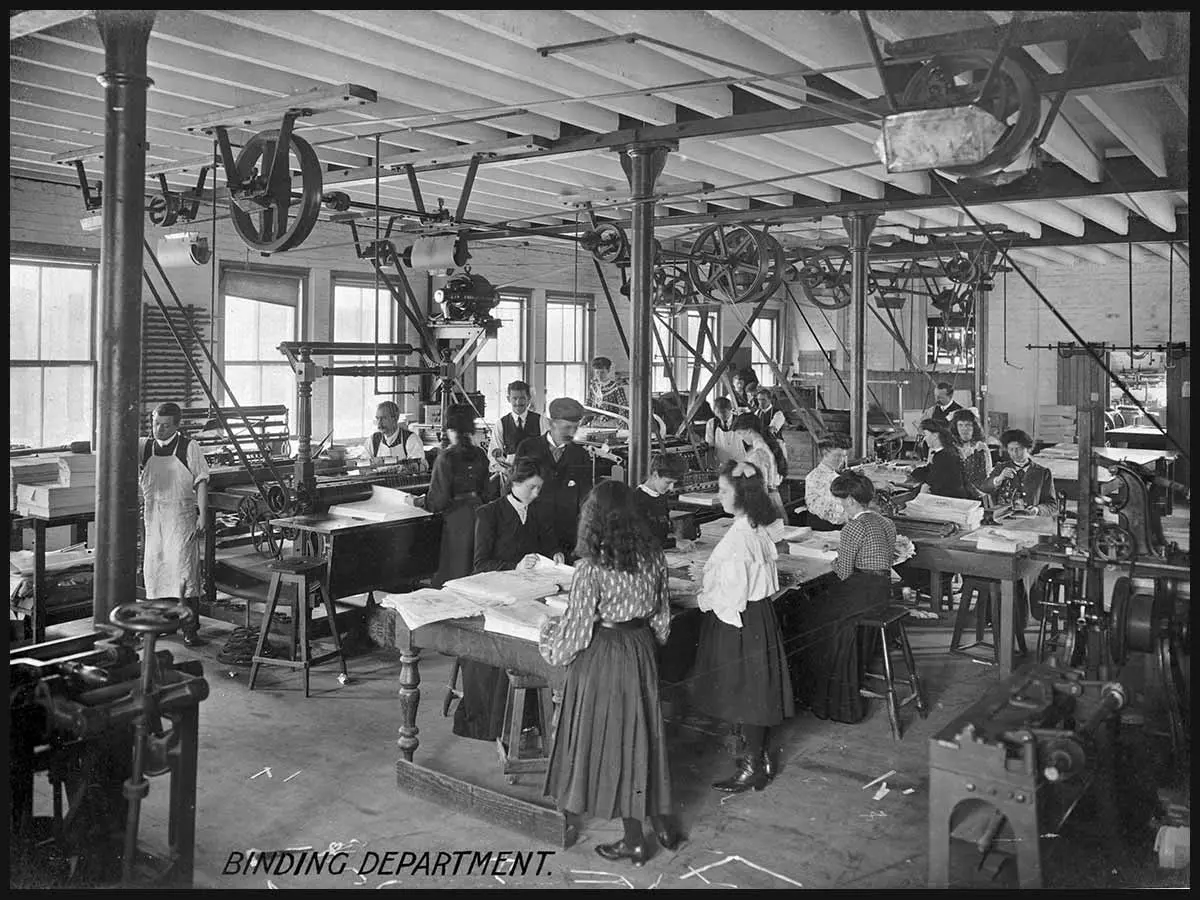
Binding newspapers.
Family in a shop.
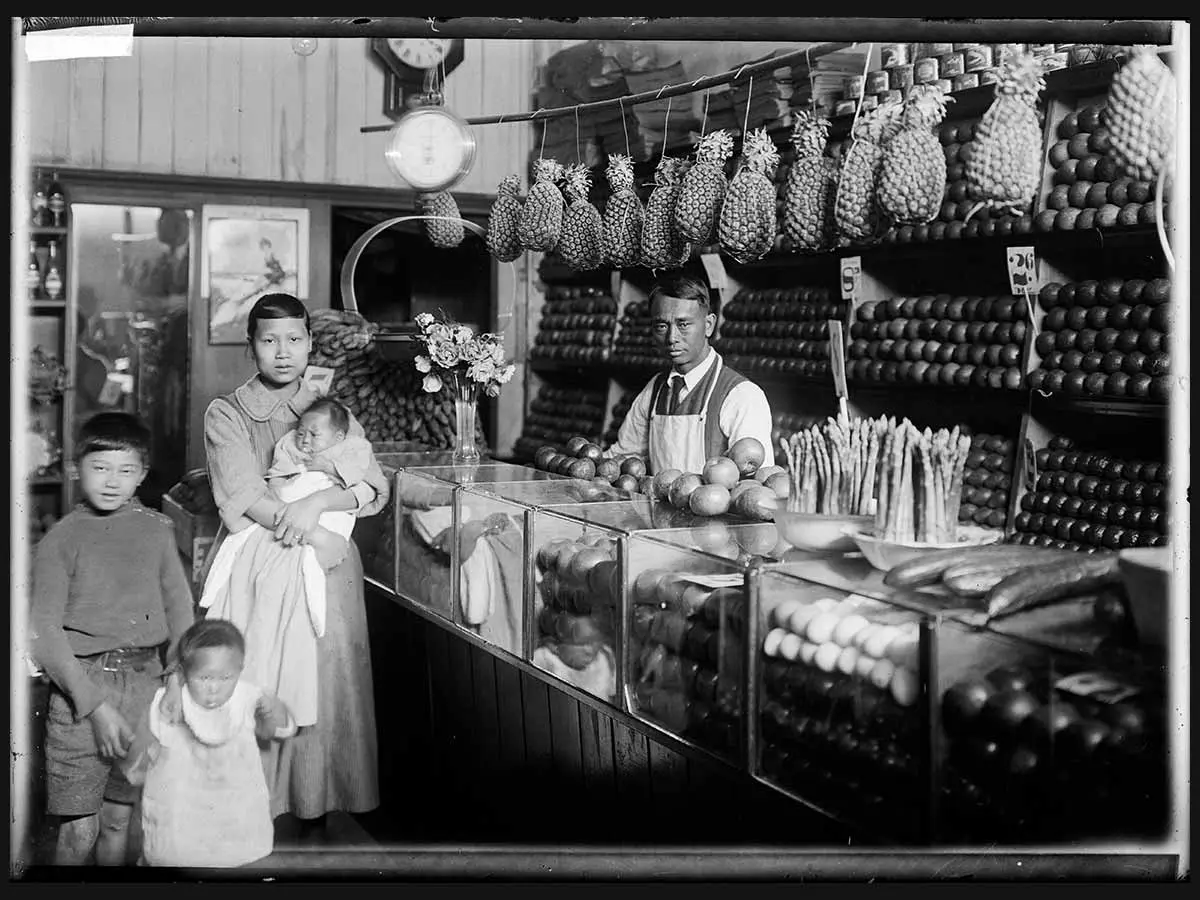
Family in a shop.
Living in a state house.
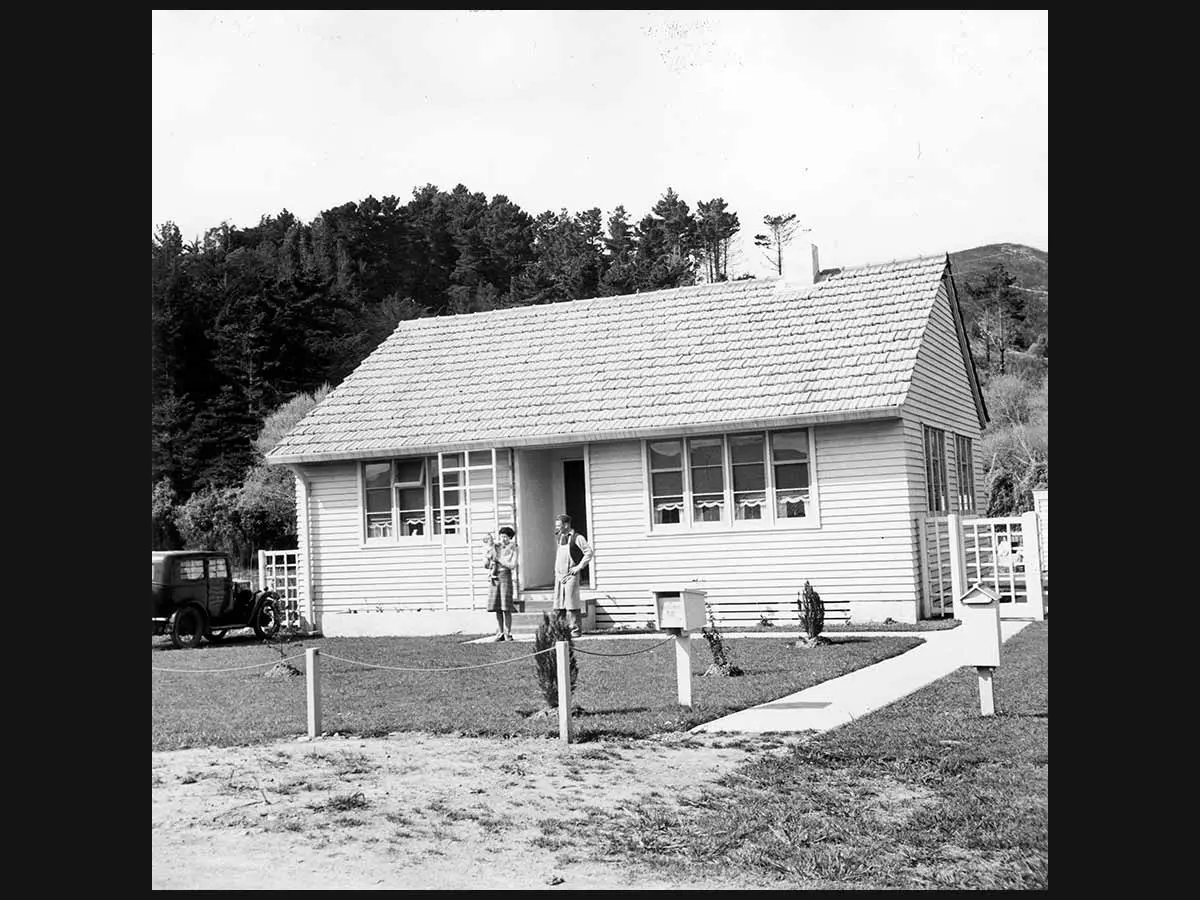
Living in a state house.
Driving a tractor.
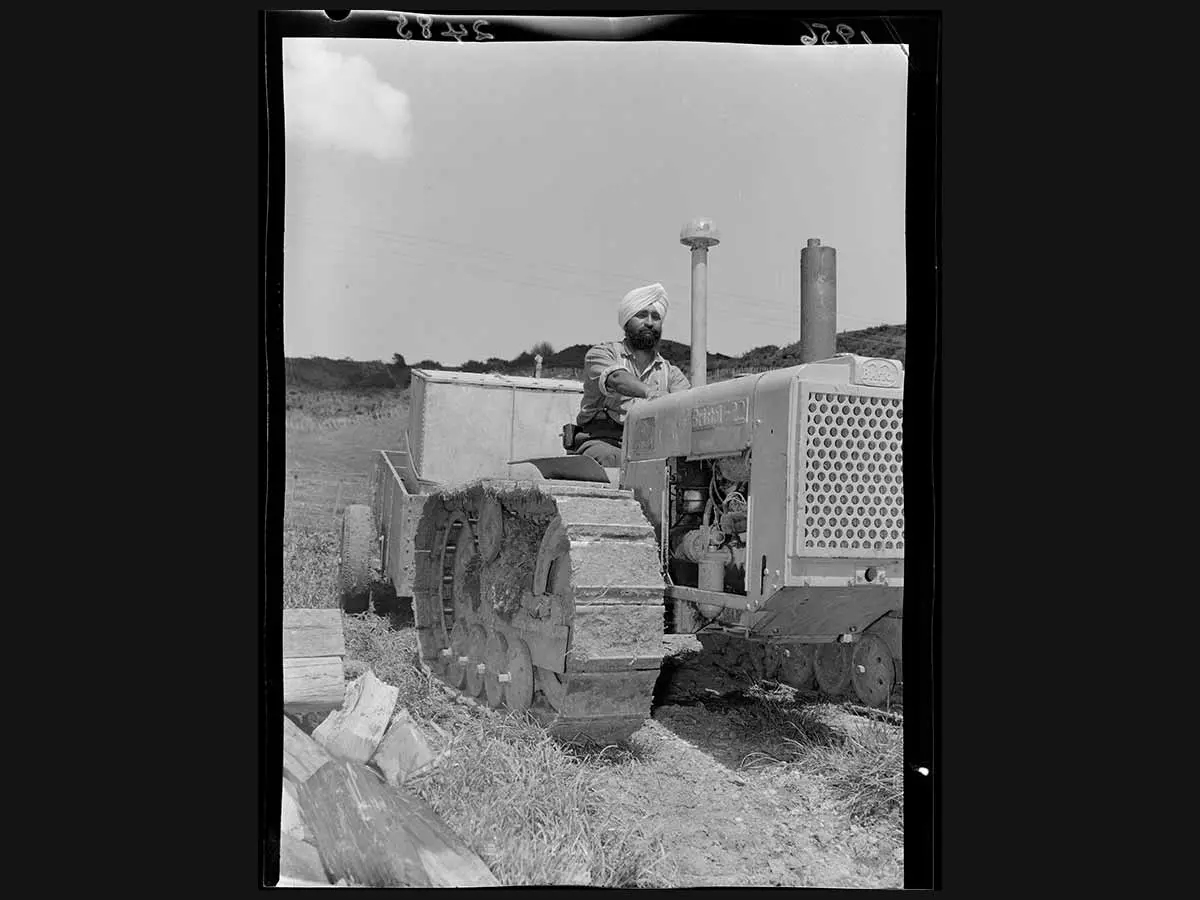
Driving a tractor.
Going shopping.
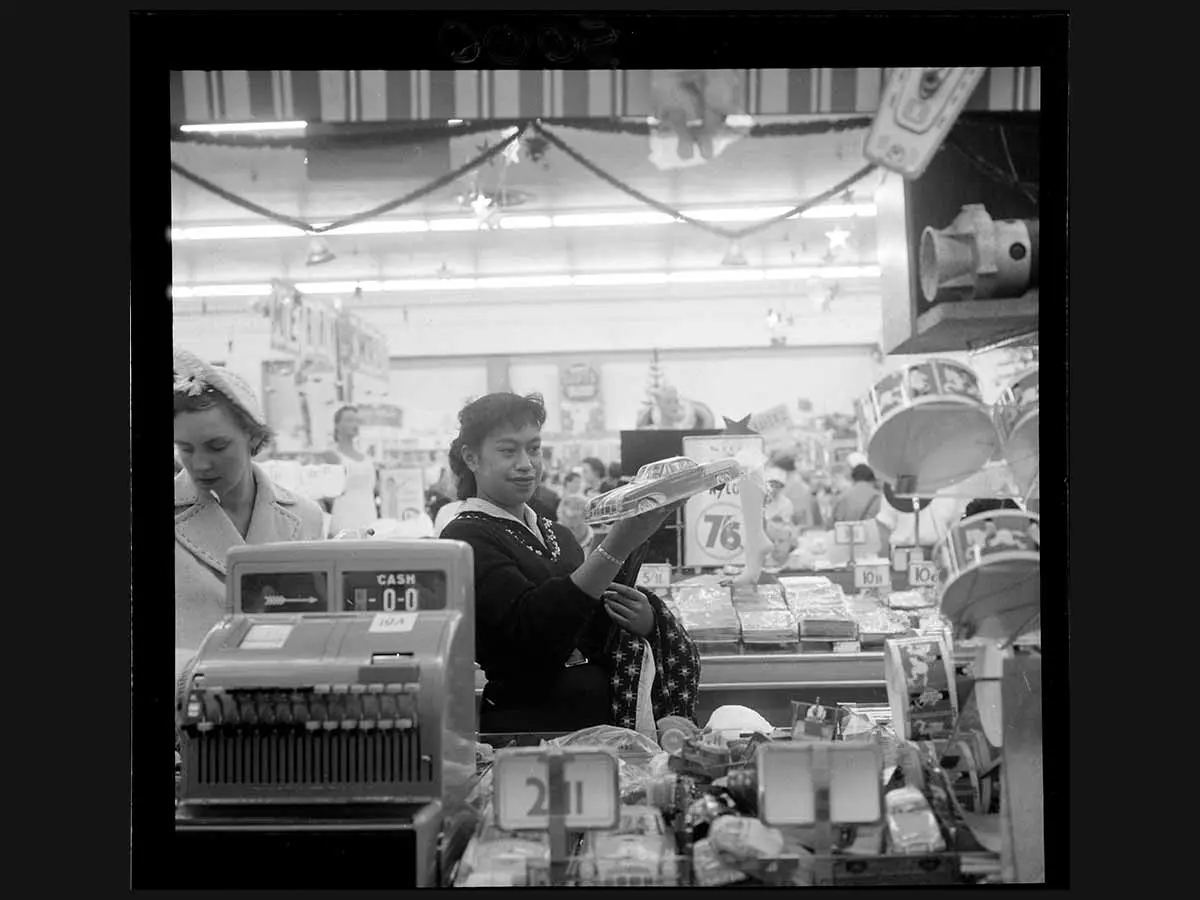
Going shopping.
Delivering milk.
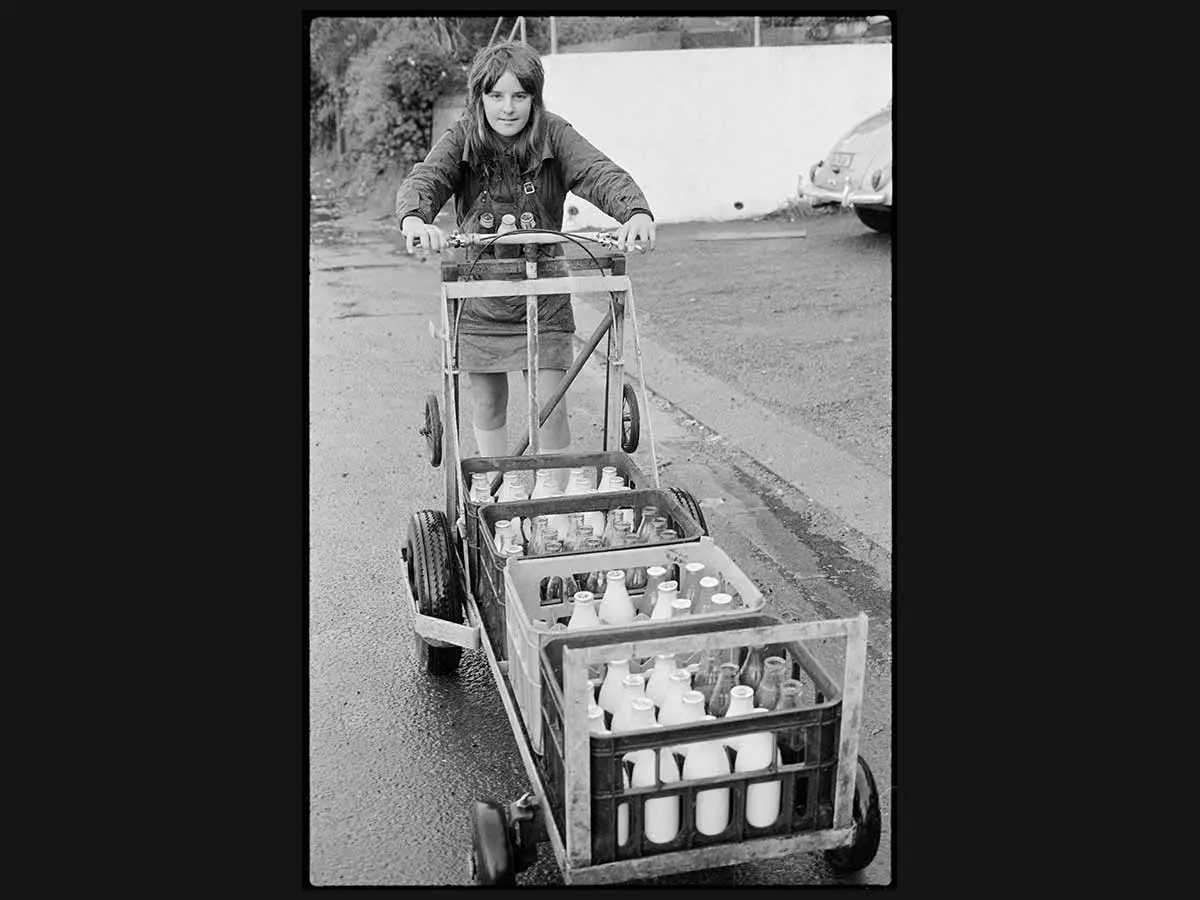
Delivering milk.
Working in schools.
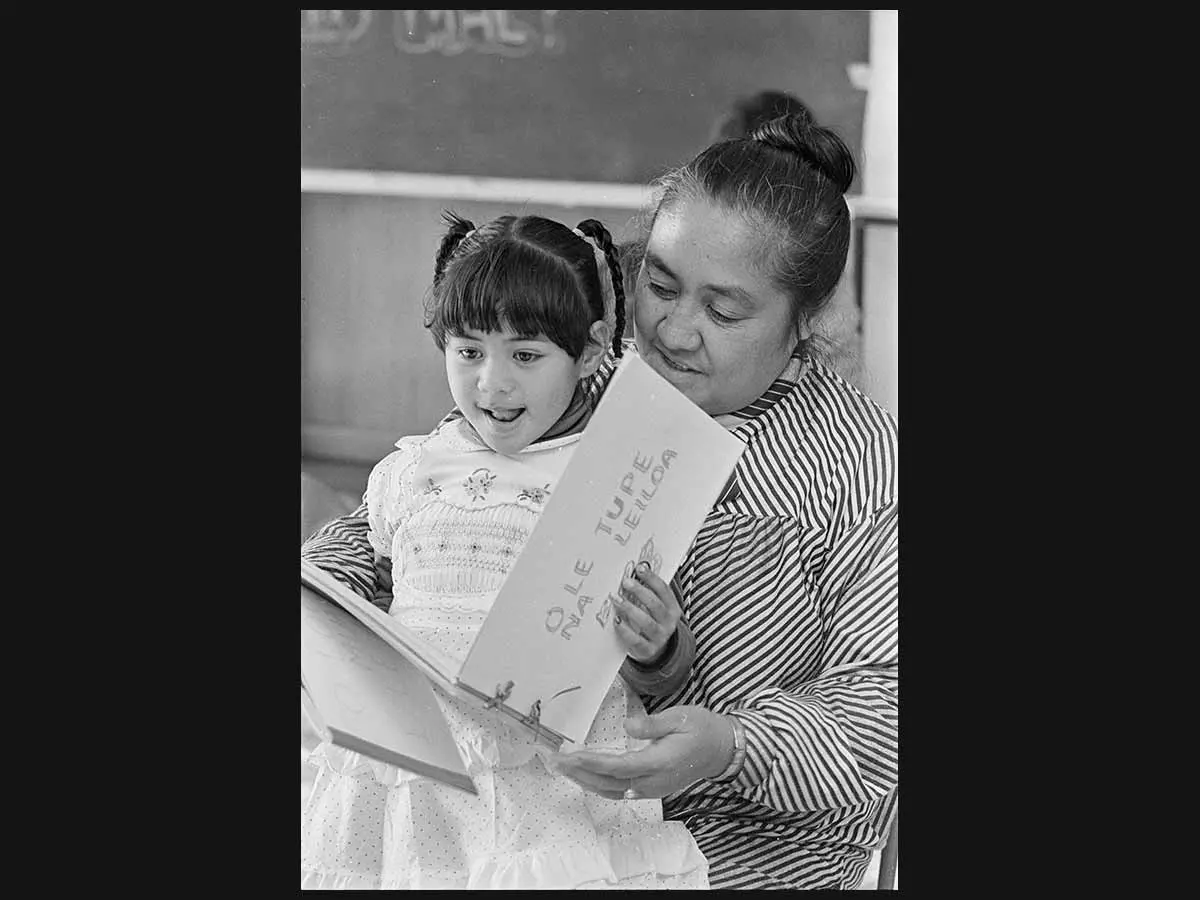
Working in schools.
Workers using a computer.
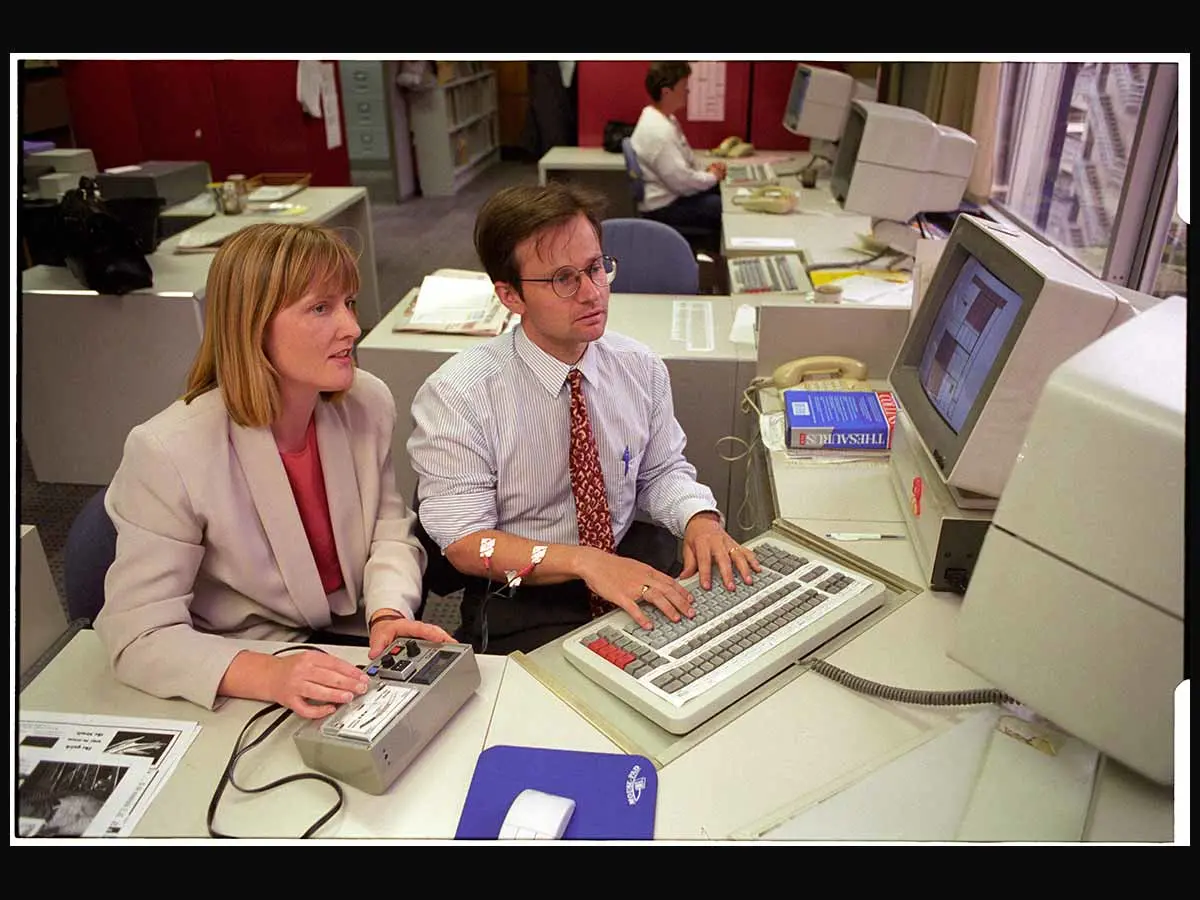
Workers using a computer.
Download and print the teacher support materials: Living and working in Aotearoa New Zealand (pdf, 962 KB).
Use the images in the ‘Living and working in Aotearoa New Zealand’ gallery to explore the social sciences Know context, ‘Ngā mahinga ohaoha | Economic activity’:
The ways different groups of people have lived and worked in this rohe have changed over time.
— Te ao tangata | social sciences
Explore ideas around economic activity, such as:
work, employment and domestic jobs
ways of living — housing, food, transport, …
rural compared with urban
technology and tools
trade and exchange.
Ākonga can explore these images as primary sources using our tools for primary source analysis.
Explore our curated collection of books: Living and working in Aotearoa New Zealand.
Use the discussion starters below to explore living and working in Aotearoa New Zealand.

Image credit: Working in the Kumara Plantation, 1955 by Russell Stuart Cedric Clark. Ref: B-023-017 Alexander Turnbull Library.
This drawing shows life on a kūmara plantation. Māori dig the soil using a kō (digging stick) or a timo (hoe or pick). In the background of the drawing, they are using harakeke kete (flax baskets) to carry kūmara.
What would life be like working on a kūmara plantation?
Why did Māori farm kūmara?
Where do we get our kūmara from today? How does your family grow or buy kūmara?

Image credit: Putiki Waranui Pah Wanganui, ca 1860–1875 by John Alexander Gilfillan. Ref: C-142-003 Alexander Turnbull Library.
This painting shows a scene in a pā at Wanganui. 3 cloaked figures sit carving wood in the foreground of the painting. A pig is tied to a pole and hens scratch in the dirt. A pātaka (raised food storehouse) is on the left and a wharenui (meeting house) is behind it.
What jobs did people do on a pā?
What buildings are on a pā?
Why was food stored in a pātaka (raised food storehouse)?

Image credit: Maori Bargaining With a Pakeha, ca 1845–1847 by John Williams and Cyprian Bridge. Ref: A-079-017 Alexander Turnbull Library.
This artwork shows trade between Māori and Pākehā. An exchange is taking place between a group of Māori and a Pākehā, thought to be Joel Samuel Polack. One Māori is gesturing with a kete (basket) of potatoes at their feet, another has a kete of potatoes on their back, and the third is holding a rope tied to a pig.
What did Māori and Pākehā trade?
Why did Māori and Pākehā trade?
How do we trade today?

Image credit: Auckland N.Z., 1852 by Walter Scarlett Hatton. Ref: B-078-012 Alexander Turnbull Library.
A painting of Queen Street wharf in 1852. Waka (canoes) are drawn up on the shore. On the wharf are barrels, packages, a person sitting on some luggage and another pushing a wheelbarrow. Buildings are along the waterfront and on Queen Street, and a horse is pulling a cart.
What types of buildings can you find in a city?
What jobs did people do in the city?
How is the Tāmaki Makaurau | Auckland wharf used today?

Image credit: Felling Kauri and Men Having Billy Tea, ca 1870–1890 by John Philemon Backhouse. Ref: E-052-q-010 Alexander Turnbull Library.
A painting showing 3 workers having a tea break on logs at the base of a huge kauri tree. Their billy is boiling over a small fire and a wooden scaffold is at the base of the kauri trunk with a cross-saw in the trunk just above the scaffold. A scarf (wedge) has been cut on the opposite side.
How did people cut down kauri?
Why did people cut down kauri?
How do we protect kauri today?

Image credit: Full-Rigged Ship ‘Invercargill’, 1887 by Charles Kensington. Ref: G-538 Alexander Turnbull Library.
A painting of the ship, Invercargill, at sea in full sail. The ship’s crew are standing on the deck. The Invercargill was the second refrigerated ship to take frozen meat to Europe from Aotearoa New Zealand.
What types of cargo do ships carry?
Why did Aotearoa New Zealand send food like meat to Europe?
Nowadays, how do we transport food and other products to different countries?

Image credit: Chinese gold miners with Rev Alexander Don, outside a sod dwelling at Tuapeka, Otago, ca 1900. Photographer unknown. Ref: 1/2-019148-F Alexander Turnbull Library.
3 Chinese gold miners sitting down with Reverend Alexander Don standing behind them, outside a sod house on a hillside. A pile of sticks is stacked on the left next to a tree.
What was life like for a gold miner?
Why did people work in gold mines?
Do we still mine for gold in Aotearoa New Zealand? Why or why not?

Image credit: Women doing housework, ca 1901–1902 by James R Cameron. Ref: 1/2-025058-G Alexander Turnbull Library.
2 people standing outside a house doing housework. They are dressed in aprons and hats, standing by the back door of a house. They are sweeping with a broom and cleaning pans. A water tank is next to the house.
What are some chores that people do at home?
Why do people do chores and housework?
Where does the water you use at home come from?

Image credit: Two boys gum digging, ca 1910 by Northwood brothers. Ref: 1/1-009779-G Alexander Turnbull Library.
2 children standing in swamp water, searching for kāpia (kauri gum). They are using gum spears and spades, and holding a kete (basket) and a bucket. Kāpia was used by Māori like chewing gum. It was also used in moko (facial tattoos) and to start fires. Kauri gum was a major export.
Why would children be doing this work? Is it okay?
Where in Aotearoa New Zealand was most kauri gum found?
Why did kauri gum become important for trade?

Image credit: Styles family on their dairy farm, Taranaki district, 1912 by James McAllister. Ref: 1/1-008141-G Alexander Turnbull Library.
Members of the Styles family standing on their dairy farm. A person is sitting on a cart carrying large cans of milk, holding the reins of 2 horses that are pulling it. In the background are large farm sheds.
What would life have been like for a dairy farmer 100 years ago?
How has farming changed over time?
Why is farming important to Aotearoa New Zealand?

Image credit: Binding department of The New Zealand Herald newspaper, Auckland, 1906. Photographer unknown. Ref: 1/2-028091-F Alexander Turnbull Library.
Workers are standing or sitting at tables looking at papers in the binding department of The New Zealand Herald newspaper. Machinery is on some of the tables and is also hanging from the ceiling.
What is working in a factory like for the workers? (What could it sound like? What could it smell like?)
How has technology in factories changed over time?
How do we get our news now?

Image credit: Chinese family in a greengrocer's shop, 1922. Photographer unknown. Ref: 1/2-037502-G Alexander Turnbull Library.
Inside the W Chong fruit shop. Shopkeeper, Wong Gar Sui, stands behind a counter with asparagus, apples and cucumbers on top. Above their head hang a row of pineapples. Wong Gar Sui’s wife, Mew Yuen, stands with their 3 children.
What is different about this shop compared to where you buy food? What is the same?
What is life like as a shopkeeper?

Image credit: The Holmes family outside their home in Naenae, 1945 by John Dobree Pascoe. Ref: 1/4-001168-F Alexander Turnbull Library.
The Holmes family are standing outside their home at 32 Naenae Road, Lower Hutt. Their home is a ‘state house’ built by the government of Aotearoa New Zealand. A car is parked in the driveway on the left.
How is this house different from houses today? How is it the same?
Does this look like a good house for a whole family? Why or why not?

Image credit: Unidentified Sikh man, driving a Bristol Track tractor, Whanganui, 1956 by unidentified Evening Post photographer. Ref: EP/1956/2485a-F Alexander Turnbull Library.
A Sikh, wearing a pagri (turban), is driving a tractor in a field on a Whanganui farm. Chopped wood is on the ground next to the tractor.
Where does our food come from?
What would life be like for a vegetable grower or farmer?
Why is it important that we can grow fruit and vegetables in Aotearoa New Zealand?

Image credit: Christmas shoppers, Wellington, 1957 by unidentified Evening Post photographer. Ref: EP/1957/5000b-F Alexander Turnbull Library.
People in a shop doing their Christmas shopping. In the foreground is a cash register, with a person standing nearby holding a toy car. You can see more toy cars, a drum kit and also some price tags in the shop.
How is this shop different from shops today?
How is money, and paying for things, different today? (Focus on the cash register.)

Image credit: Girl delivering milk, Wellington region, 1975 by unidentified Evening Post photographer. Ref: 1/4-022793-F Alexander Turnbull Library.
A young person is pushing a cart filled with crates of glass milk bottles along a footpath. They are wearing an apron with more milk bottles in their pocket. Milk was delivered to people's homes. People would leave their empty bottles outside their house. The milk delivery person would collect them and leave bottles filled with fresh milk.
Where do we buy food like milk or bread today?
Is it good for young people to have a job?
What other food and products can you get delivered today?

Image credit: Samoan playschools administrator Fereni Ete, reading a story in Samoan, Wellington, ca 1988 by Martin Hunter. Ref: EP/1988/2781/13a-F Alexander Turnbull Library.
Samoan playschools administrator, Fereni Ete, is reading a story in Samoan to a child, Fuatina Mapu. They are at the Samoan A’oga Amata (beginning school) at Strathmore Park School. In the background is a blackboard on the wall with chalk writing on it.
What do you like about reading or being read to?
Why is reading so important?
Why is it important children get to read in their ‘home language’?

Image credit: Brenda Moana testing Graeme Peters for repetitive strain injury, ca 1994 by Ray Pigney. Ref: EP/1994/3706/8-F Alexander Turnbull Library.
Brenda Moana and journalist Graeme Peters sitting at an office desk in front of a computer. Brenda Moana is testing Graeme Peters for symptoms of repetitive strain injury as Graeme Peters works at the computer. A phone and thesaurus sit on the desk.
What would it be like to work in an office all day?
How has computer technology changed in the last 30 years?
How have computers changed the way we live and work?